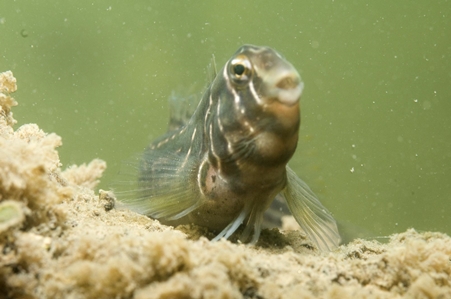General Description
Body long, slender, compressed; snout steep, mouth small; eyes near top of head; tentacles absent from nostrils and above eye; dorsal fin long-based; pelvic fins reduced to a hidden spine and two long, slender rays. Males with a prominent fleshy crest on the head, and long filamentous dorsal-fin rays. Usually olive green with black spots and fine bluish or blackish lines along sides, and fine whitish wavy lines on head. To 9 cm.
Biology
This species is common along the east coast. Often found amongst encrusting tube worms in the intertidal region of Port Phillip Bay. Females lay eggs in empty oyster or mussel shells.
Habitat
Shallow tropical and temperate bays and estuaries, especially amongst oyster and mussel beds, in depths of 0-10 m.
Soft substrates
Distribution guide
New Zealand, eastern and south-eastern Australia.
Species Group
Depth
Shore (0-1 m)
Shallow (1-30 m)
Water Column
Max Size
9 cm
Diet
Carnivore
Commercial Species
No
Global Dispersal
Recorded in Australia
Conservation Status
- DSE Advisory List : Not listed
- EPBC Act 1999 : Not listed
- IUCN Red List : Least Concern








